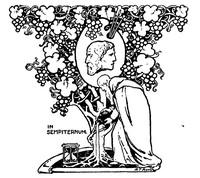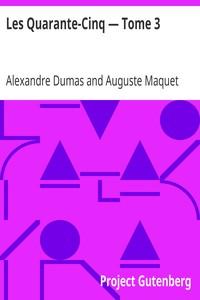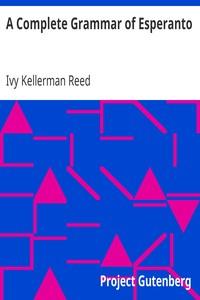Read this ebook for free! No credit card needed, absolutely nothing to pay.
Words: 9435 in 4 pages
This is an ebook sharing website. You can read the uploaded ebooks for free here. No credit cards needed, nothing to pay. If you want to own a digital copy of the ebook, or want to read offline with your favorite ebook-reader, then you can choose to buy and download the ebook.


: Leonardo Da Vinci by Brockwell Maurice W - Leonardo da Vinci 1452-1519; Painters Italy Biography Masterpieces in Colour
His Birth His Early Training His Early Works First Visit to Milan In the East Back in Milan The Virgin of the Rocks The Last Supper The Court of Milan Leonardo Leaves Milan Mona Lisa Battle of Anghiari Again in Milan In Rome In France His Death His Art His Mind His Maxims His Spell His Descendants
HIS BIRTH
Leonardo Da Vinci, the many-sided genius of the Italian Renaissance, was born, as his name implies, at the little town of Vinci, which is about six miles from Empoli and twenty miles west of Florence. Vinci is still very inaccessible, and the only means of conveyance is the cart of a general carrier and postman, who sets out on his journey from Empoli at sunrise and sunset. Outside a house in the middle of the main street of Vinci to-day a modern and white-washed bust of the great artist is pointed to with much pride by the inhabitants. Leonardo's traditional birthplace on the outskirts of the town still exists, and serves now as the headquarters of a farmer and small wine exporter.
Leonardo di Ser Piero d'Antonio di Ser Piero di Ser Guido da Vinci--for that was his full legal name--was the natural and first-born son of Ser Piero, a country notary, who, like his father, grandfather, and great-grandfather, followed that honourable vocation with distinction and success, and who subsequently--when Leonardo was a youth--was appointed notary to the Signoria of Florence. Leonardo's mother was one Caterina, who afterwards married Accabriga di Piero del Vaccha of Vinci.
The date of Leonardo's birth is not known with any certainty. His age is given as five in a taxation return made in 1457 by his grandfather Antonio, in whose house he was educated; it is therefore concluded that he was born in 1452. Leonardo's father Ser Piero, who afterwards married four times, had eleven children by his third and fourth wives. Is it unreasonable to suggest that Leonardo may have had these numbers in mind in 1496-1498 when he was painting in his famous "Last Supper" the figures of eleven Apostles and one outcast?
However, Ser Piero seems to have legitimised his "love child" who very early showed promise of extraordinary talent and untiring energy.
HIS EARLY TRAINING
HIS EARLY WORKS
To about the year 1472 belongs the small picture of the "Annunciation," now in the Louvre, which after being the subject of much contention among European critics has gradually won its way to general recognition as an early work by Leonardo himself. That it was painted in the studio of Verrocchio was always admitted, but it was long catalogued by the Louvre authorities under the name of Lorenzo di Credi. It is now, however, attributed to Leonardo . Such uncertainties as to attribution were common half a century ago when scientific art criticism was in its infancy.
To January 1473 belongs Leonardo's earliest dated work, a pen-and-ink drawing--"A Wide View over a Plain," now in the Uffizi. The inscription together with the date in the top left-hand corner is reversed, and proves a remarkable characteristic of Leonardo's handwriting--viz., that he wrote from right to left; indeed, it has been suggested that he did this in order to make it difficult for any one else to read the words, which were frequently committed to paper by the aid of peculiar abbreviations.
Leonardo continued to work in his master's studio till about 1477. On January 1st of the following year, 1478, he was commissioned to paint an altar-piece for the Chapel of St. Bernardo in the Palazzo Vecchio, and he was paid twenty-five florins on account. He, however, never carried out the work, and after waiting five years the Signoria transferred the commission to Domenico Ghirlandajo, who also failed to accomplish the task, which was ultimately, some seven years later, completed by Filippino Lippi. This panel of the "Madonna Enthroned, St. Victor, St. John Baptist, St. Bernard, and St. Zenobius," which is dated February 20, 1485, is now in the Uffizi.
That Leonardo was by this time a facile draughtsman is evidenced by his vigorous pen-and-ink sketch--now in a private collection in Paris--of Bernardo Bandini, who in the Pazzi Conspiracy of April 1478 stabbed Giuliano de' Medici to death in the Cathedral at Florence during High Mass. The drawing is dated December 29, 1479, the date of Bandini's public execution in Florence.
Free books android app tbrJar TBR JAR Read Free books online gutenberg
More posts by @FreeBooks


: Les Quarante-Cinq — Tome 3 by Dumas Alexandre Maquet Auguste - France History Henry III 1574-1589 Fiction FR Littérature







